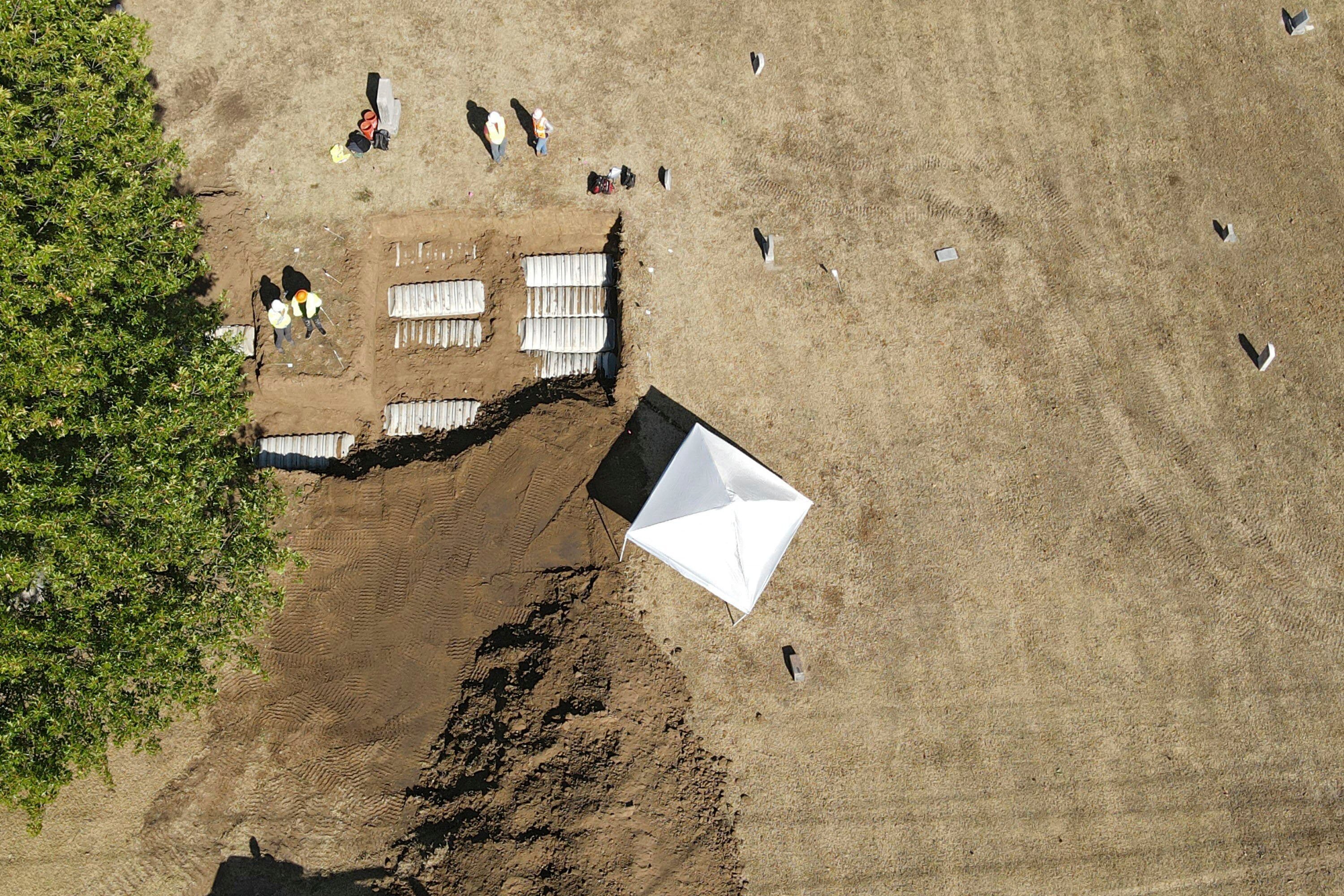21 new graves found in search for Tulsa Massacre victims
Officials say the search for remains of victims of the 1921 Tulsa Race Massacre has turned up 21 additional graves in the city’s Oaklawn Cemetery

Your support helps us to tell the story
From reproductive rights to climate change to Big Tech, The Independent is on the ground when the story is developing. Whether it's investigating the financials of Elon Musk's pro-Trump PAC or producing our latest documentary, 'The A Word', which shines a light on the American women fighting for reproductive rights, we know how important it is to parse out the facts from the messaging.
At such a critical moment in US history, we need reporters on the ground. Your donation allows us to keep sending journalists to speak to both sides of the story.
The Independent is trusted by Americans across the entire political spectrum. And unlike many other quality news outlets, we choose not to lock Americans out of our reporting and analysis with paywalls. We believe quality journalism should be available to everyone, paid for by those who can afford it.
Your support makes all the difference.The search for remains of victims of the 1921 Tulsa Race Massacre has turned up 21 additional graves in the city’s Oaklawn Cemetery, officials said.
Seventeen adult-size graves were located Friday and Saturday, Oklahoma State Archaeologist Kary Stackelbeck said Monday. Additionally, the city announced Tuesday that four graves, two adult-size and two child-size, had been found.
The coffins, then the remains, will be examined to see if they match reports from 1921 that the victims were males buried in plain caskets.
“This is going to part of our process of discriminating which ones we're going to proceed with in terms of exhuming those individuals and which ones we're actually going to leave in place,” Stackelbeck said in a video statement.
The work, by hand, was still underway, and the types of coffins and gender of the victims have not been determined, according to the city's statement.
The remains will be reburied, at least temporarily, at Oaklawn, where a previous reburial was closed to the public, drawing protests from about two dozen people who said they are descendants of massacre victims and should have been allowed to attend.
A violent white mob targeted Black people during the massacre, in which more than 1,000 homes were burned, hundreds were looted, and a thriving business district known as Black Wall Street was destroyed. Historians have estimated the death toll at 75 to 300.
A search for the graves of massacre victims began in 2020 and resumed last year with nearly three dozen coffins recovered.
Fourteen sets of remains were sent for testing, and two had enough DNA to begin sequencing and start developing a genealogy profile.
The current search includes reexhuming the other 12 remains in an effort to collect more usable DNA in an effort to eventually identify them.
The massacre wiped out generational wealth, and victims were never compensated, but a pending lawsuit seeks reparations for the three remaining known survivors. They are now more than 100 years old.